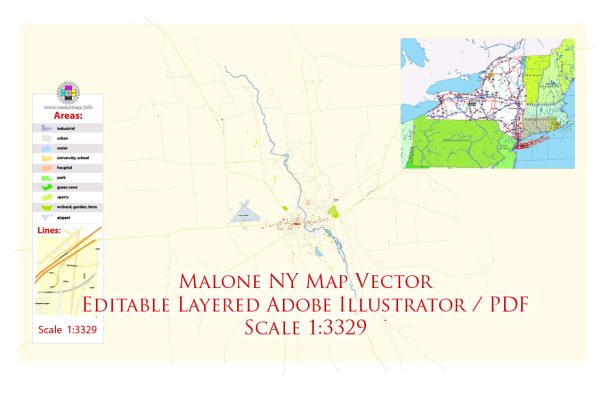Malone is a town located in Franklin County, in the state of New York, United States. While Malone is not typically characterized as a large urban center, it does have a rich history related to its development and growth as a community. Here is a brief overview of the history of urban development in Malone:
- Early Settlement and Development (Late 18th Century): Malone’s history dates back to the late 18th century when European settlers, primarily of French and English descent, began to establish farms and communities in the area. The region was known for its fertile soil, attracting agricultural development.
- Economic Activities (19th Century): In the 19th century, Malone’s economy flourished with the development of various industries, including lumber, milling, and tanning. These industries played a crucial role in shaping the town’s early economic landscape.
- Transportation Growth (19th Century): The construction of railroads in the mid-19th century further contributed to Malone’s growth. Improved transportation facilitated the movement of goods and people, connecting Malone to larger markets and contributing to economic development.
- Incorporation and Town Growth: Malone was incorporated as a village in 1853, and over time, it grew as a hub for commerce and services in the surrounding agricultural region.
- Architectural Heritage: The town boasts a mix of architectural styles that reflect its historical development. Some buildings from the 19th and early 20th centuries still stand, providing a glimpse into the town’s past.
- Educational and Cultural Institutions: Malone is home to several educational and cultural institutions, including the Alice Hyde Medical Center and North Country Community College, which have played roles in shaping the town’s identity.
- Modern Development: In more recent decades, Malone has seen developments in infrastructure, services, and community facilities. While it may not have experienced the same level of urbanization as larger cities, Malone has continued to evolve to meet the needs of its residents.
- Recreation and Tourism: The surrounding natural beauty, including the Adirondack Mountains and nearby lakes, has contributed to the development of recreational and tourism opportunities in the region. Outdoor activities, such as hiking and fishing, are popular attractions.
While Malone may not fit the traditional definition of a large urban center, its history reflects the broader trends of settlement, economic development, and adaptation to changing times that characterize many communities in the United States.


 Author: Kirill Shrayber, Ph.D.
Author: Kirill Shrayber, Ph.D.